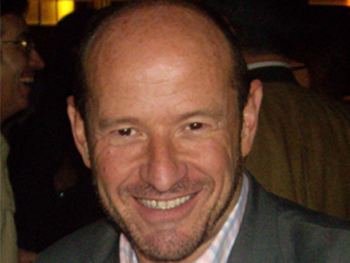
The man set to replace Lourdes Fernández was the fair’s deputy director from 1994 to 1998
Madrid, 05/31/2010
This morning, the Executive Board of IFEMA unanimously approved the appointment of Carlos Urroz as the new director of ARCOmadrid. He will be replacing Lourdes Fernández, who resigned her position on May 3 of this year after directing the last four editions of the fair.
According to the press release issued by IFEMA, Urroz was chosen based on his extensive experience in the contemporary art world, his history with ARCOmadrid (where he served as deputy director from 1994 to 1998), and his work as an independent cultural agent and at the Helga de Álvear Gallery. He also serves as visual arts advisor to the Cultural Office of the Regional Government of Madrid.
Urroz, whose name had come up repeatedly over the past several weeks as one of the favorites (other strong candidates included Lorena Corral, Javier González de Durana, Paloma Martín Llopis and José Guirao), takes the helm at a time when the fair is facing serious difficulties in the wake of the crisis which shook its foundations in 2010. He will also have to face the requests and demands of gallerists who regularly participate in ARCO and feel slighted by IFEMA’s current management after it attempted to include several galleries not chosen by the selection committee in the last edition of the fair.
In the early days of 2010, as the first decade of the 21st century came to a close, masdearte contacted several professionals from the art world and asked for their opinion on how artistic practice in our country has evolved over the past 10 years, on the general art and market trends, and on how all this will play out in the coming years. We also asked them to name the three artists who, in their view, were the most prominent of the last decade. This is how Carlos Urroz responded:
“Over these past 10 years, the contemporary art scene in Spain has improved significantly. The creation of museums such as La Panera in Lleida, the MUSAC in León and the Centro de Arte Dos de Mayo in Móstoles, which not only exhibit the work of Spanish and international artists but also produce their creations and reach out to other museums and centers, has done much to boost the visibility and professionalization of our artists.
The birth of the Contemporary Art Institute, which publicizes best practices and works to ensure that cultural policies serve the interests of artists and art professionals. Regional and municipal governments that have expressed a growing interest in exhibiting the art produced in their own backyards, as well as the work of international artists which puts the local creations into perspective. Some of today’s most important collections, the future cultural heritage of this nation, have come about in this way. Also, private collecting has made great strides, becoming more international and mature and working with the local authorities.
My list of most prominent artists features three women, given their tremendous potential as creators, who in this decade were able to successfully build upon the foundations laid in the final years of the last century. Although they belong to different generations, my choices would be:
Cristina Iglesias
Alicia Framis
Ester Partegás
Much still remains to be done, particularly in terms of the visibility of our artists and institutions in the international arena, but I think that now the entire industry shares similar ideas and criteria for a better appreciation of contemporary art in Spain and – with a bit of help – abroad.”




